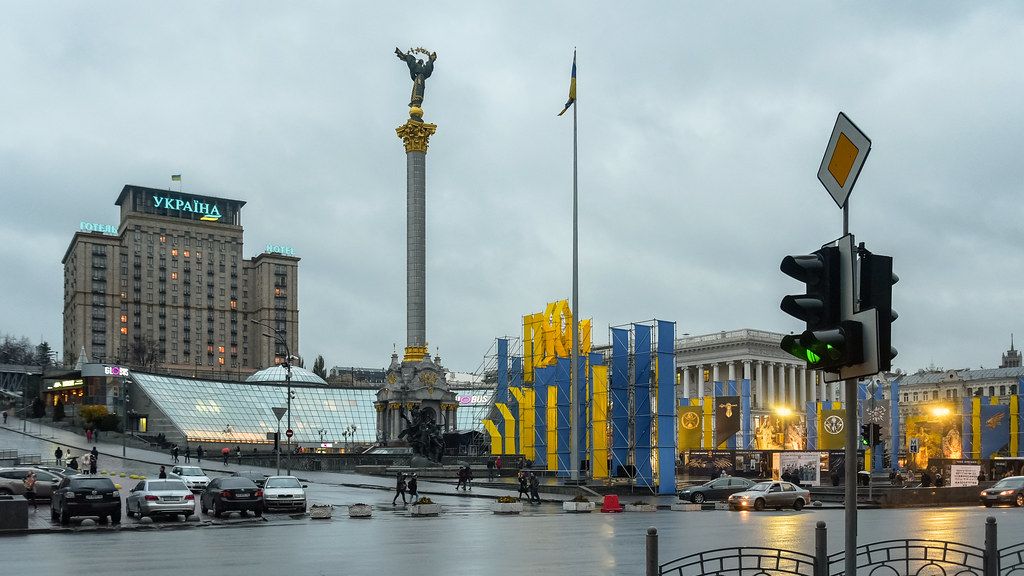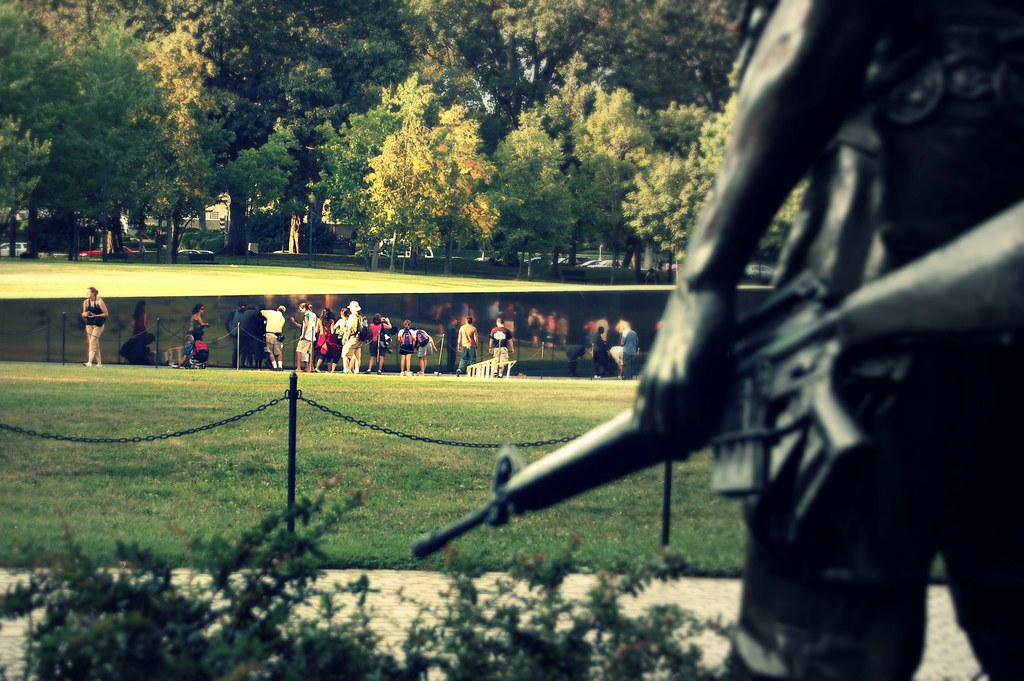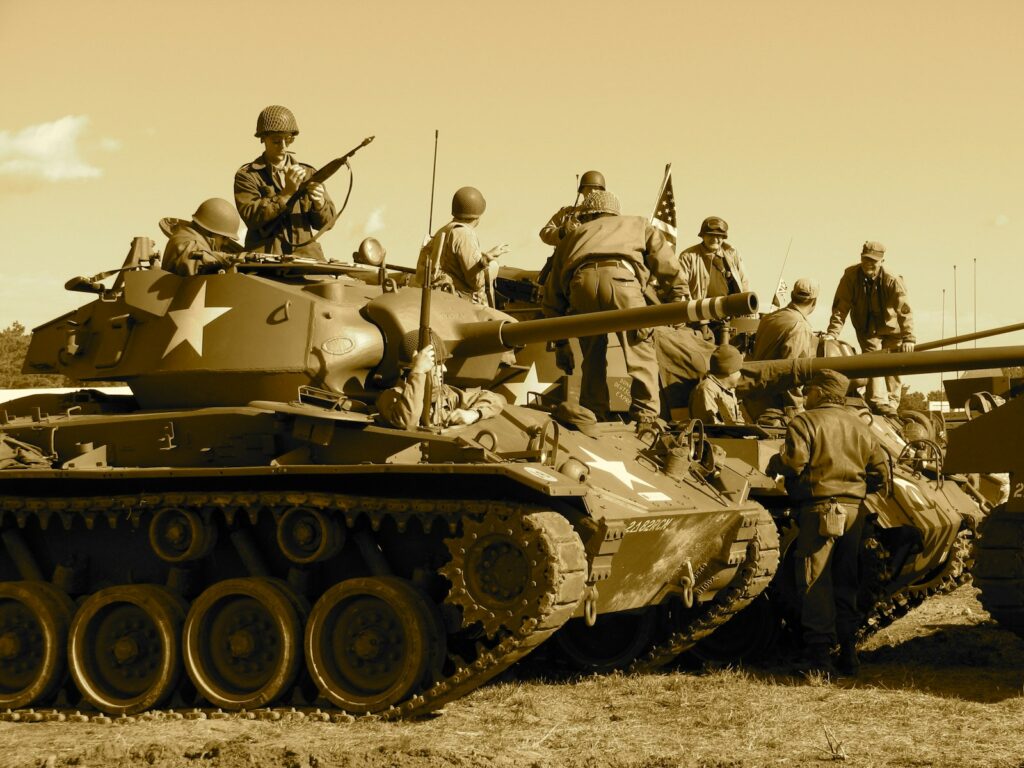
The Pentagon has ordered the USS Gerald R. Ford Carrier Strike Group to the Caribbean, marking a significant escalation in U.S. military presence and operations in the region. This deployment integrates one of the Navy’s largest and most potent formations into an already substantial build-up, which the White House asserts is primarily aimed at disrupting drug traffickers and dismantling transnational criminal organizations. The move has drawn considerable attention, both domestically and internationally, due to its scale and the accompanying rhetoric from U.S. officials, signaling a robust and potentially long-term commitment to stability and security in the Western Hemisphere.
This latest development adds the aircraft carrier’s more than 70 aircraft and multiple destroyers to an array of firepower already deployed to the area. Officials have emphasized that the increased military footprint is designed to bolster U.S. capacity to detect, monitor, and disrupt illicit actors and activities that compromise the safety and prosperity of the United States homeland. The decision comes amidst a quickening pace of U.S. strikes against suspected drug-carrying vessels, raising new questions about the scope, legality, and future trajectory of these operations within an international context.
This article provides an in-depth look at the key facets of this major deployment, examining the specific naval and air assets involved, the stated objectives as articulated by U.S. defense officials, the administrative pronouncements guiding these actions, the nature of the escalating kinetic strikes against maritime targets, and the particular focus on designated criminal organizations like Tren de Aragua. The aim is to present a clear, factual overview of the situation as described by official sources and related reporting, adhering to principles of clarity, conciseness, and impartiality in news dissemination.
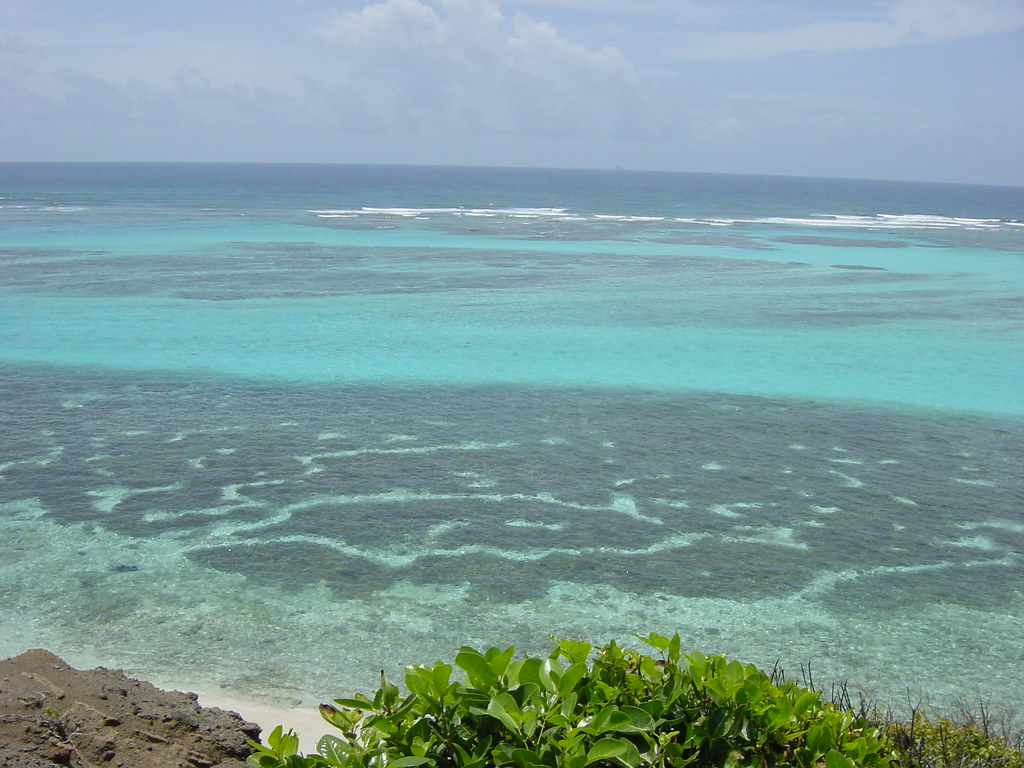
1. **Deployment of the USS Gerald R. Ford Carrier Strike Group to the Caribbean**:The Pentagon officially announced the deployment of the USS Gerald R. Ford Carrier Strike Group (CSG) to the Caribbean, signaling a major increase in U.S. military power. This strategic redeployment places one of the Navy’s most advanced and largest naval assets, with its escorting destroyers and air wing, into an area already experiencing a significant build-up. Defense Secretary Pete Hegseth issued the order, emphasizing the high-level commitment to this operation.
Pentagon spokesman Sean Parnell confirmed the deployment to the U.S. Southern Command (USSOUTHCOM) area of responsibility, encompassing Central America, South America, and the Caribbean. This decision integrates the carrier’s substantial aerial and naval support into existing regional operations, underscoring a strategic shift in force projection, specifically targeting counter-narcotics efforts and the broader mission of disrupting transnational criminal organizations.
The USS Gerald R. Ford was previously in the Mediterranean Sea, specifically in port in Croatia on the Adriatic Sea. Its journey to the Caribbean will involve transiting the Atlantic Ocean over several days. This rapid relocation demonstrates the dynamic nature of U.S. naval operations and the capacity for high-value assets to be repositioned swiftly in response to evolving strategic priorities and operational requirements. This deployment marks a remarkable escalation in President Donald Trump’s campaign, potentially almost doubling the number of U.S. troops in the region.
Military equipment: Carrier battle group
Categories: Aircraft carriers, All articles needing additional references, All articles with dead external links, All articles with vague or ambiguous time, Articles containing French-language text
Summary: A carrier battle group (CVBG) is a naval fleet consisting of an aircraft carrier capital ship and its large number of escorts, together defining the group. The CV in CVBG is the United States Navy hull classification code for an aircraft carrier.
The first naval task forces built around carriers appeared just prior to and during World War II. The Imperial Japanese Navy (IJN) was the first to assemble many carriers into a single task force, known as the Kido Butai. This task force was used with devastating effect in the Japanese attack on Pearl Harbor. The Kido Butai operated as the IJN’s main carrier battle group until four of its carriers were sunk at the Battle of Midway. In contrast, the United States Navy deployed its large carriers in separate formations, with each carrier assigned its own cruiser and destroyer escorts. These single-carrier formations would often be paired or grouped together for certain assignments, most notably the Battle of the Coral Sea and Midway. By 1943, however, large numbers of fleet and light carriers became available, which required larger formations of three or four carriers. These groups eventually formed the Fast Carrier Task Force, which became the primary battle unit of the U.S. Third and Fifth Fleets.
With the construction of the large “supercarriers” of the Cold War era, the practice of operating each carrier in a single formation was revived. During the Cold War, the main role of the CVBG in case of conflict with the Soviet Union would have been to protect Atlantic supply routes between the United States and its NATO allies in Europe, while the role of the Soviet Navy would have been to interrupt these sea lanes, a fundamentally easier task. Because the Soviet Union had no large carriers of its own, a situation of dueling aircraft carriers would have been unlikely. However, a primary mission of the Soviet Navy’s attack submarines was to track every allied battle group and, on the outbreak of hostilities, sink the carriers. Understanding this threat, the CVBG expended enormous resources in its own anti-submarine warfare mission.
Get more information about: Carrier battle group
Read more about: Decoding Naval Power: A Lifehacker’s Guide to Understanding the United States Navy’s Enduring Strength
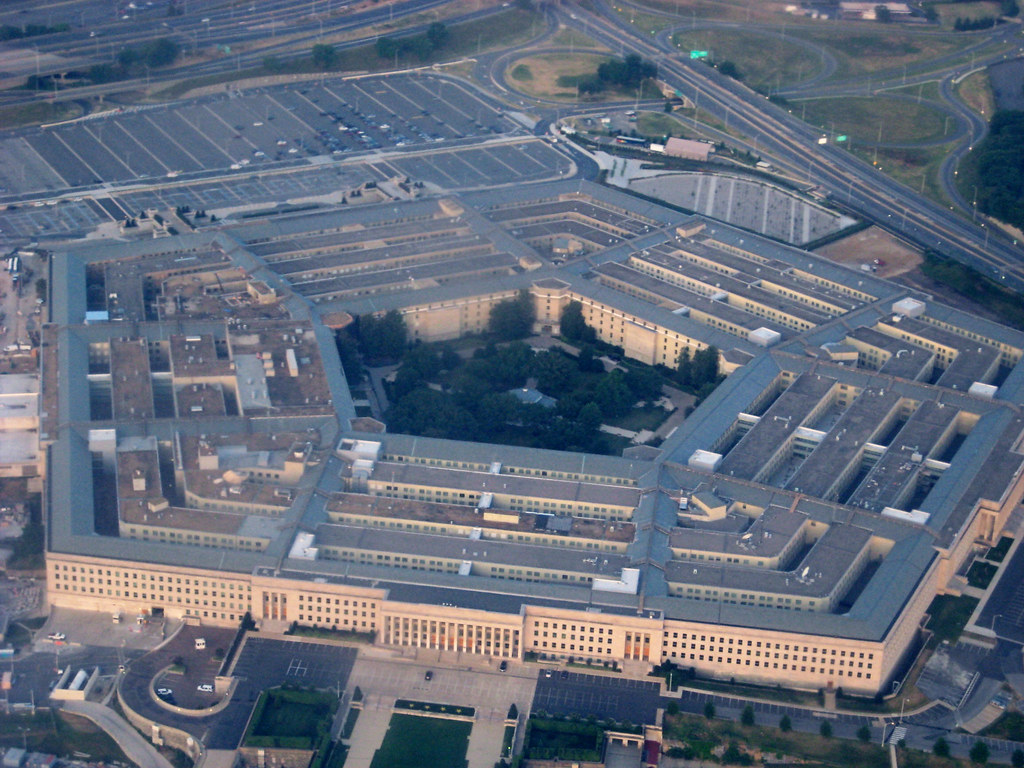
2. **Pentagon’s Stated Mission: Countering TCOs and Narco-Terrorism**:The primary justification for the Gerald R. Ford Carrier Strike Group’s deployment stems directly from the President’s directive to dismantle Transnational Criminal Organizations (TCOs) and counter narco-terrorism. Pentagon spokesperson Sean Parnell explicitly stated the strike group’s mission supports this directive, framed as a crucial defense of the United States Homeland. This articulates an overarching strategic imperative for the military engagement in the region.
This objective is reinforced by the administration’s narrative, which consistently links drug trafficking to national security concerns. Parnell explained the expanded military presence aims to “bolster U.S. capacity to detect, monitor, and disrupt illicit actors and activities that compromise the safety and prosperity of the United States homeland and our security in the Western Hemisphere.” This clarifies the intent to proactively target and neutralize criminal networks operating throughout the hemisphere.
Defense Secretary Pete Hegseth has drawn direct comparisons between the current anti-drug campaign and the “war on terror” following September 11, 2001. President Donald Trump has also declared drug cartels unlawful combatants and asserted an “armed conflict” with them, leveraging similar legal authority. This framing elevates the anti-drug campaign to a national security imperative, providing a framework for sustained military force, aiming not just to “disrupt narcotics trafficking” but to “degrade and dismantle” criminal groups.
Military equipment: XM25 Counter Defilade Target Engagement System
Manufacturer: H&K, ATK
Service: US Army
Caliber: 25mm
Weight: 13.5 pounds
Length: 29.9 inches
Max Range: 700 meters
Categories: Army Equipment, Army Weapons, Infantry Weapons, Weapons
Get more information about: XM25 Counter Defilade Target Engagement System
_on_the_James_River_on_11_June_2016.JPG/2560px-USS_Gerald_R._Ford_(CVN-78)_on_the_James_River_on_11_June_2016.JPG)
3. **Composition and Scale of the Gerald R. Ford Strike Group**:Carrier Strike Group 12, led by the USS Gerald R. Ford, represents a formidable collection of naval power directed to the Caribbean. The USS Gerald R. Ford, the Navy’s largest aircraft carrier, can carry up to 90 aircraft. It is accompanied by destroyers, specifically the USS Bainbridge and USS Mahan, and Carrier Air Wing 8, forming a potent operational unit.
The strike group’s air contingent is comprehensive, featuring four squadrons of F/A-18 fighters and one squadron of E/A-18G strike fighters. These advanced aircraft offer extensive operational capabilities, including air superiority, precision ground attack, and sophisticated electronic warfare. This diverse and technologically advanced air wing significantly enhances the U.S. military’s ability to conduct sustained air operations, surveillance, interdiction, and targeted kinetic strikes across a broad area.
A full deployment could introduce nearly 4,500 additional sailors and nine squadrons of aircraft, substantially increasing personnel and aerial assets. This makes the current build-up one of the largest naval power deployments since the Red Sea conflict in late 2023. While typically featuring five destroyers, the exact escort composition for the Caribbean journey remains to be fully clarified by officials, allowing for flexible force projection.
Military equipment: Carrier battle group
Categories: Aircraft carriers, All articles needing additional references, All articles with dead external links, All articles with vague or ambiguous time, Articles containing French-language text
Summary: A carrier battle group (CVBG) is a naval fleet consisting of an aircraft carrier capital ship and its large number of escorts, together defining the group. The CV in CVBG is the United States Navy hull classification code for an aircraft carrier.
The first naval task forces built around carriers appeared just prior to and during World War II. The Imperial Japanese Navy (IJN) was the first to assemble many carriers into a single task force, known as the Kido Butai. This task force was used with devastating effect in the Japanese attack on Pearl Harbor. The Kido Butai operated as the IJN’s main carrier battle group until four of its carriers were sunk at the Battle of Midway. In contrast, the United States Navy deployed its large carriers in separate formations, with each carrier assigned its own cruiser and destroyer escorts. These single-carrier formations would often be paired or grouped together for certain assignments, most notably the Battle of the Coral Sea and Midway. By 1943, however, large numbers of fleet and light carriers became available, which required larger formations of three or four carriers. These groups eventually formed the Fast Carrier Task Force, which became the primary battle unit of the U.S. Third and Fifth Fleets.
With the construction of the large “supercarriers” of the Cold War era, the practice of operating each carrier in a single formation was revived. During the Cold War, the main role of the CVBG in case of conflict with the Soviet Union would have been to protect Atlantic supply routes between the United States and its NATO allies in Europe, while the role of the Soviet Navy would have been to interrupt these sea lanes, a fundamentally easier task. Because the Soviet Union had no large carriers of its own, a situation of dueling aircraft carriers would have been unlikely. However, a primary mission of the Soviet Navy’s attack submarines was to track every allied battle group and, on the outbreak of hostilities, sink the carriers. Understanding this threat, the CVBG expended enormous resources in its own anti-submarine warfare mission.
Get more information about: Carrier battle group

4. **Broader U.S. Military Build-Up in the Caribbean Region**:The USS Gerald R. Ford’s deployment is part of an already extensive U.S. military build-up in the Caribbean Sea and waters off Venezuela. This multi-faceted effort has seen a substantial aggregation of forces beyond the incoming carrier group. Currently, over 6,000 troops, including sailors and Marines, are spread across eight warships operating within the region, even prior to the Ford’s arrival.
Significant air power complements these naval assets. This month, the U.S. Air Force flew several B-52s and B-1 bombers near Venezuela, demonstrating long-range strike capabilities. Additionally, Marine Corps F-35 fighter jets and several military drones have been deployed to Puerto Rico, enhancing intelligence, surveillance, and reconnaissance (ISR) and providing additional strike options.
The existing naval armada includes destroyers like the USS Jason Dunham, USS Gravely, and USS Stockdale, supported by the guided-missile cruiser Lake Erie and the littoral combat ship Wichita. The U.S. Navy and Marine Corps have also deployed the Iwo Jima Amphibious Ready Group (ARG), a three-ship task force with additional sailors and Marines from the 22nd Marine Expeditionary Unit (MEU), providing amphibious assault and ground combat capabilities. SOUTHCOM plans to organize forces for counter-narcotics operations into a joint task force, overseen by II Marine Expeditionary Force, streamlining command for complex multi-branch operations.
Military equipment: 2025 United States naval deployment in the Caribbean
Name: 2025 United States naval deployment in the Caribbean
Partof: post–Cold War era
Caption: An infographic for the conflict, including approximate locations of American forces and approximate locations of airstrikes
PlannedBy: United States
Location: Nobr
Objective: Nobr
Date: [object Object]
ExecutedBy: Navy,flagicon image,Central Intelligence Agency
Fatalities: As of 24 October 2025, in the Caribbean Sea only, 38
Campaignbox: Campaignbox Operations in the War on drugs
Categories: 2020s conflicts, 2025 in Venezuela, 2025 in international relations, 2025 in the Caribbean, 2025 military operations
Summary: In late August 2025, the United States began a naval buildup in the southern Caribbean with the stated goal to combat drug trafficking. US President Donald Trump directed the United States Armed Forces to begin using military force against certain Latin American drug cartels, characterizing the smugglers as narcoterrorists.
The first operation of the campaign was the 2 September strike and sinking of a vessel—coming from Venezuela and allegedly involving Tren de Aragua gang members carrying illegal drugs—killing 11 people. The US deployed military assets to Puerto Rico, subsequent airstrikes destroyed other alleged drug-smuggling vessels, and the Dominican Navy engaged to recover drugs from one of the destroyed vessels.
Experts, Trump administration and Venezuelan opposition sources stated that a likely goal of the operation is to force the departure of top figures in the Nicolás Maduro government; others speculated that an invasion of Venezuela is unlikely, and questioned the legality of the strikes on vessels.
Get more information about: 2025 United States naval deployment in the Caribbean
Read more about: The World Is Watching: China’s Military Parade Signals a Reshaping of Global Power Dynamics
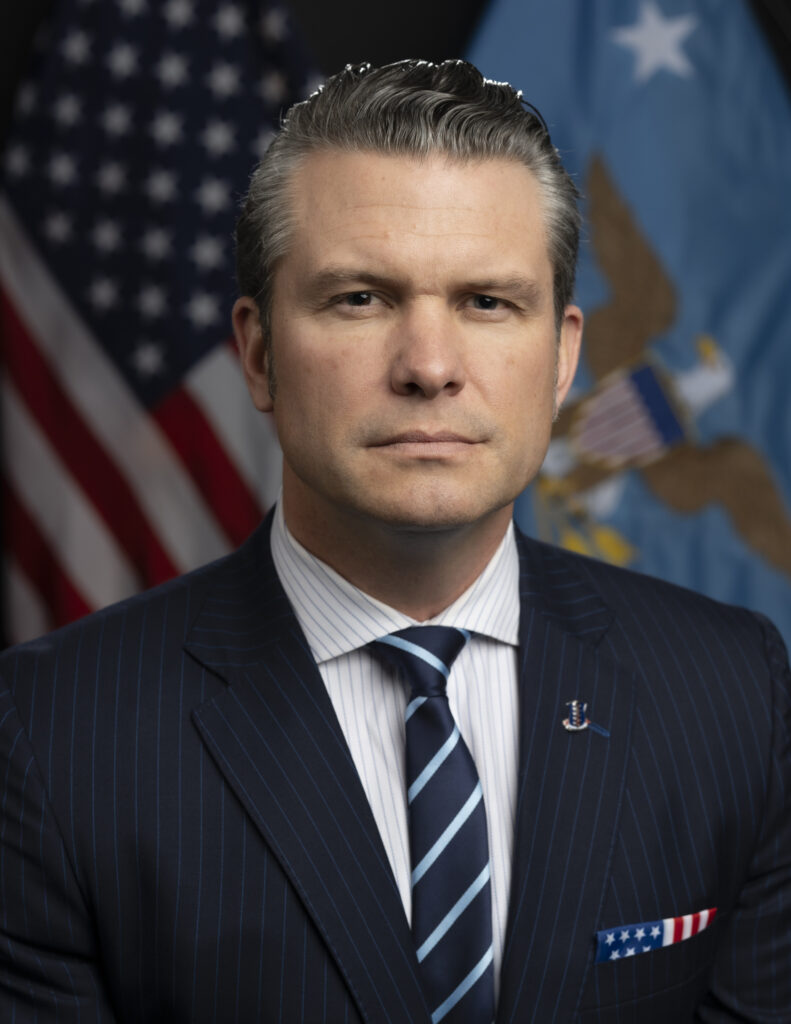
5. **Defense Secretary Hegseth and Spokesperson Parnell on the Deployment**:Defense Secretary Pete Hegseth and Pentagon Spokesperson Sean Parnell are key communicators for the increased U.S. military presence in the Caribbean. Parnell officially confirmed the Gerald R. Ford deployment, linking it to the President’s directive against Transnational Criminal Organizations and narco-terrorism in defense of the Homeland. His public statements have consistently emphasized bolstering U.S. capacity to “detect, monitor, and disrupt illicit actors and activities.”
Hegseth has adopted an assertive public stance, directly comparing the anti-drug campaign to the “war on terror.” His rhetoric includes strong warnings like, “If you are a narco-terrorist smuggling drugs in our hemisphere, we will treat you like we treat Al-Qaeda. Day or NIGHT, we will map your networks, track your people, hunt you down, and kill you.” These statements clearly signal a readiness to employ lethal force against drug traffickers.
The Defense Secretary has also been the primary source for announcing U.S. strike results. He reported the 10th strike on a suspected drug-running boat, with six deaths, bringing the total to 43 since September. His consistent messaging, often via social media, highlights the administration’s determination to publicly and vigorously prosecute this campaign. Parnell added that the aim is not just to “disrupt narcotics trafficking” but to “degrade and dismantle” criminal groups, reinforcing a comprehensive strategy.
Military equipment: Pete Hegseth
Name: Hegseth
Caption: Official portrait, 2025
Office: United States Secretary of Defense
President: Donald Trump
Deputy: Steve Feinberg
TermStart: January 25, 2025
Predecessor: Lloyd Austin
BirthName: Peter Brian Hegseth
BirthDate: [object Object]
BirthPlace: Minneapolis
Party: Republican Party (United States)
Spouse: [object Object],[object Object],[object Object]
Children: Sfn
Education: Princeton University,Harvard University
Branch: Army National Guard
Serviceyears: 2003–2006,2010–2014,2019–2021
Rank: Major (United States)
Unit: Minnesota Army National Guard,District of Columbia Army National Guard
Battles: Iraq War,War in Afghanistan (2001–2021)
Mawards: Bronze Star,Joint Service Commendation Medal,Commendation Medal,Combat Infantryman Badge
Signature: Signature of Secretary of Defense Pete Hegseth.svg
SignatureAlt: Cursive signature in ink
Module2: Listen voice
Filename: Pete Hegseth speaks on the United States strikes on Iranian nuclear sites during the Iran–Israel war.wav
Description: United States strikes on Iranian nuclear sites
Recorded: June 22, 2025
Categories: 1980 births, 2025 controversies in the United States, 21st-century American male writers, 21st-century American politicians, All Wikipedia articles written in American English
Summary: Peter Brian Hegseth (born June 6, 1980) is an American government official, author, former television personality, and former Army National Guard officer who has served since 2025 as the 29th United States secretary of defense.
Hegseth studied politics at Princeton University, where he was the publisher of The Princeton Tory, a conservative student newspaper. In 2003, he was commissioned as an infantry officer in the Minnesota Army National Guard, serving at Guantanamo Bay Naval Base and deployed to Iraq and Afghanistan. Hegseth worked for several organizations after leaving Iraq, including as an executive director at Vets for Freedom and Concerned Veterans for America. He became a contributor to Fox News in 2014. Hegseth served as an advisor to President Donald Trump after supporting his campaign in 2016. From 2017 to 2024, Hegseth co-hosted Fox & Friends Weekend. He has written several books, including American Crusade (2020) and The War on Warriors (2024).
In November 2024, President-elect Trump named Hegseth as his nominee for secretary of defense. In a Senate Committee on Armed Services hearing days before Trump’s second inauguration, Hegseth faced allegations of sexual misconduct, financial mismanagement, and alcohol issues. Hegseth was confirmed by the Senate that month, with Vice President JD Vance casting a tie-breaking vote. It was only the second time in US history that a Cabinet nominee’s confirmation was decided by a vice president (following Betsy DeVos during the first Trump administration in 2017). Hegseth is the second-youngest secretary of defense (after Donald Rumsfeld).
Get more information about: Pete Hegseth
_underway_on_8_April_2017.JPG/450px-USS_Gerald_R._Ford_(CVN-78)_underway_on_8_April_2017.JPG)
6. **Escalation of U.S. Strikes on Suspected Drug-Running Vessels**:The USS Gerald R. Ford’s deployment coincides with a rapidly escalating series of U.S. military strikes against suspected drug-carrying vessels in the Caribbean and surrounding waters. The frequency of these strikes has sharply increased, from weekly in early September to three within a single week, demonstrating a more aggressive and sustained operational approach by the U.S. military.
These operations have proven notably lethal. Official White House figures indicate U.S. strikes on boats in the region have resulted in at least 43 deaths since September, with one recent strike alone claiming six lives. These incidents extend beyond the Caribbean, with two recent strikes occurring in the eastern Pacific Ocean, broadening the geographical scope of military actions to major cocaine transit routes.
The nature of these strikes has drawn international attention. Governments and media report casualties from Colombia, Ecuador, and Trinidad and Tobago. Rescued survivors, like an Ecuadorian man later released without charges, raise questions about intelligence accuracy and due process. The Trump administration defends these strikes as vital, with Secretary of State Marco Rubio stating, “if people want to stop seeing drug boats blow up, stop sending drugs to the United States.” This rhetoric places responsibility on traffickers, though officials note many targeted boats service routes to West Africa and Europe, not directly the U.S.
Military equipment: 2025 United States naval deployment in the Caribbean
Name: 2025 United States naval deployment in the Caribbean
Partof: post–Cold War era
Caption: An infographic for the conflict, including approximate locations of American forces and approximate locations of airstrikes
PlannedBy: United States
Location: Nobr
Objective: Nobr
Date: [object Object]
ExecutedBy: Navy,flagicon image,Central Intelligence Agency
Fatalities: As of 24 October 2025, in the Caribbean Sea only, 38
Campaignbox: Campaignbox Operations in the War on drugs
Categories: 2020s conflicts, 2025 in Venezuela, 2025 in international relations, 2025 in the Caribbean, 2025 military operations
Summary: In late August 2025, the United States began a naval buildup in the southern Caribbean with the stated goal to combat drug trafficking. US President Donald Trump directed the United States Armed Forces to begin using military force against certain Latin American drug cartels, characterizing the smugglers as narcoterrorists.
The first operation of the campaign was the 2 September strike and sinking of a vessel—coming from Venezuela and allegedly involving Tren de Aragua gang members carrying illegal drugs—killing 11 people. The US deployed military assets to Puerto Rico, subsequent airstrikes destroyed other alleged drug-smuggling vessels, and the Dominican Navy engaged to recover drugs from one of the destroyed vessels.
Experts, Trump administration and Venezuelan opposition sources stated that a likely goal of the operation is to force the departure of top figures in the Nicolás Maduro government; others speculated that an invasion of Venezuela is unlikely, and questioned the legality of the strikes on vessels.
Get more information about: 2025 United States naval deployment in the Caribbean
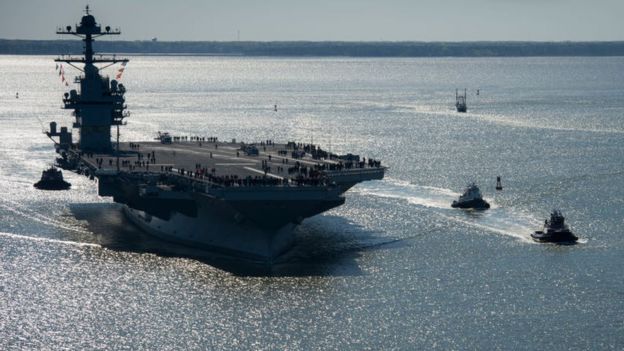
7. **Focus on Tren de Aragua and “Narco-Terrorist” Designation**:A significant aspect of the Trump administration’s anti-narcotics campaign is its explicit focus on the Venezuelan gang Tren de Aragua. Defense Secretary Pete Hegseth has repeatedly accused crews of struck vessels of being members of this group. While the administration links Tren de Aragua to these boats, the context notes this is often done “with little public evidence,” which has drawn scrutiny.
Earlier this year, the Trump administration designated several gangs and drug cartels, including Tren de Aragua, as “foreign terrorist organizations.” This critical designation legally permits the U.S. government to treat these groups with frameworks typically applied to terrorist entities. This strategic branding provides a robust legal basis for aggressive military actions, reframing the conflict as a necessary counter-terrorism operation against “narco-terrorism.”
The emphasis on Tren de Aragua serves a dual purpose for the administration. It provides a concrete target for military operations and strengthens the narrative that the U.S. is engaged in a vital fight against dangerous, terror-linked criminals threatening national security. This is evident in Hegseth’s statements, reinforcing the administration’s focus on this organization. This approach, identifying groups as “unlawful combatants” and the U.S. in “armed conflict,” legitimizes military actions beyond traditional law enforcement, laying groundwork for potential land-based operations hinted at by President Trump.
Military equipment: U-6A Beaver
Prime Contractor: de Havilland Canada
Service: United States Navy
Propulsion: One Pratt & Whitney 450 hp R985 Wasp Junior SB-3 reciprocating radial engine
Speed: 163 miles per hour
Range: 455 miles
Crew: 2 pilots and 5 crew
Categories: Military Aircraft, Navy Aircraft, Navy Equipment
Get more information about: U-6A Beaver
Read more about: U.S. Navy’s Caribbean Operations: An In-Depth Look at Vessel Interdictions, Escalating Tensions with Venezuela, and Legal Scrutiny
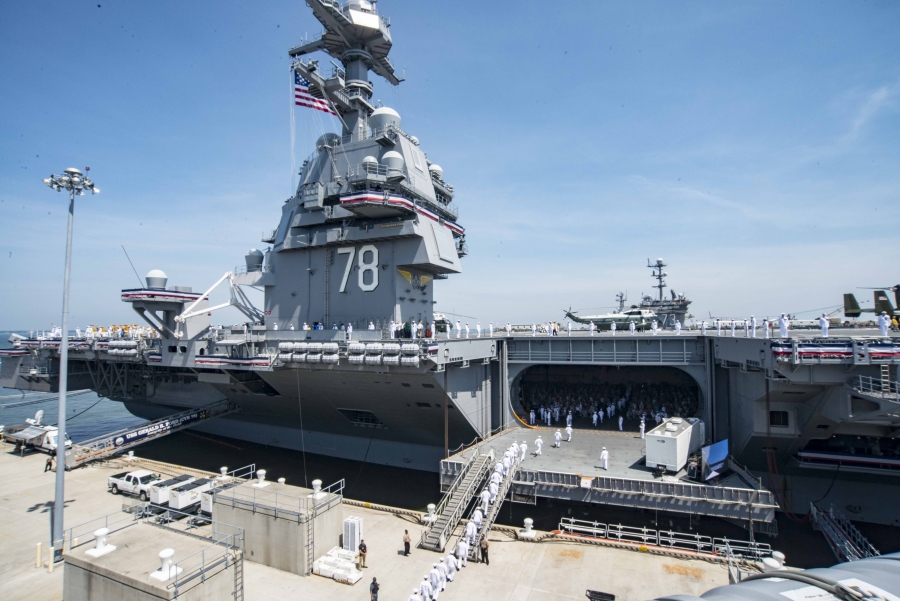
8. **U.S. Focus on Venezuelan President Nicolás Maduro**:The deployment of the USS Gerald R. Ford and the acceleration of U.S. military operations in the Caribbean have intensified the focus on Venezuelan President Nicolás Maduro. The Trump administration has long branded Maduro as an illegitimate leader and has pursued various strategies to pressure his government. U.S. officials have openly speculated whether the anti-drug campaign could serve as a precursor or cover for broader actions aimed at removing Maduro from power, particularly as he faces charges of narcoterrorism in the U.S.
Maduro, in response to the U.S. military build-up, has vehemently accused the United States of “fabricating a war.” He has asserted that the increased presence is a pretext for intervention and has mobilized Venezuelan security forces and a civilian militia for defense exercises along the country’s extensive coastline. These exercises, Maduro stated, covered “100% of all the country’s coastline in real time, with all the equipment and heavy weapons to defend all of Venezuela’s coasts if necessary,” underscoring his preparedness to resist any perceived aggression.
Analysts like Elizabeth Dickinson, a senior analyst for Latin America at the International Crisis Group, have offered a critical perspective on the U.S. narrative. Dickinson noted that a common sentiment in the region is, “‘Drugs are the excuse.’ And everyone knows that.” She suggested that the primary message being sent to regional capitals is that the U.S. is determined to pursue specific objectives and is willing to employ military force against leaders and countries that do not align with its interests, implying a political dimension beyond mere counter-narcotics.
Military equipment: Nicolás Maduro
Name: Nicolás Maduro
Caption: Maduro in 2023
Office: President of Venezuela
Vicepresident: Collapsible list
Title: See list
TermStart: ref label
Predecessor: Hugo Chávez
Office1: United Socialist Party of Venezuela
Vicepresident1: Diosdado Cabello
TermStart1: 5 March 2013
Predecessor1: Hugo Chávez
Office2: Vice President of Venezuela
President2: Hugo Chávez,Himself (acting)
TermStart2: 13 October 2012
TermEnd2: 19 April 2013
Predecessor2: Elías Jaua
Successor2: Collapsed infobox section begin
Office3: List of ministers of foreign affairs of Venezuela
President3: Hugo Chávez
TermStart3: 9 August 2006
TermEnd3: 13 October 2012
Predecessor3: Alí Rodríguez Araque
Successor3: Elías Jaua
Office4: President of the National Assembly of Venezuela
TermStart4: 5 January 2005
TermEnd4: 7 August 2006
Predecessor4: Francisco Ameliach
Successor4: Cilia Flores
Office5: National Assembly (Venezuela)
TermStart5: 3 August 2000
TermEnd5: 7 August 2006
Constituency5: Capital District (Venezuela)
Office6: Chair of the Non-Aligned Movement
TermStart6: 17 September 2016
TermEnd6: 25 October 2019
Predecessor6: Hassan Rouhani
Successor6: Ilham Aliyev
Office7: President pro tempore of the Union of South American Nations
TermStart7: 23 April 2016
TermEnd7: 21 April 2017
Predecessor7: Tabaré Vázquez
Successor7: Mauricio Macri
BirthName: Nicolás Maduro Moros
BirthDate: [object Object]
BirthPlace: Caracas, for more details.}} Venezuela
Party: United Socialist Party of Venezuela
Otherparty: Fifth Republic Movement
Spouse: [object Object]
Children: Nicolás Maduro Guerra
Residence: Miraflores Palace
Occupation: Politician
Signature: Nicolas Maduro Signature 2024.svg
Footnotes: note
Categories: 1962 births, 21st-century Venezuelan politicians, All Wikipedia articles in need of updating, All articles to be expanded, All articles with criticism or controversy sections
Summary: Nicolás Maduro Moros (born 23 November 1962) is a Venezuelan politician and former union leader who has been serving as the president of Venezuela since 2013. A member of the United Socialist Party (PSUV), he previously served as the 24th vice president under President Hugo Chávez from 2012 to 2013 and was also the minister of foreign affairs from 2006 to 2012.
Beginning his working life as a bus driver, Maduro rose to become a trade union leader before being elected to the National Assembly in 2000. He was appointed to a number of positions under President Hugo Chávez, serving as President of the National Assembly from 2005 to 2006, as Minister of Foreign Affairs from 2006 to 2012 and as the vice president from 2012 to 2013 under Chávez. After Chávez’s death was announced on 5 March 2013, Maduro assumed the presidency. A special presidential election was held on 14 April 2013, where Maduro was declared the winner with 50.62% of the vote as the United Socialist Party of Venezuela candidate. He has ruled Venezuela by decree since 2015 through powers granted to him by the ruling party legislature.
Shortages in Venezuela and decreased living standards led to a wave of protests in 2014 that escalated into daily marches nationwide, repression of dissent and a decline in Maduro’s popularity. An opposition-led National Assembly was elected in 2015 and a movement toward recalling Maduro began in 2016, which was ultimately cancelled by Maduro’s government; Maduro maintained power through the Supreme Tribunal, the National Electoral Council (CNE) and the military. The Supreme Tribunal removed power from the elected National Assembly, resulting in a constitutional crisis and another wave of protests in 2017. As a response to the protests, Maduro called for a rewrite of the constitution, and the Constituent Assembly of Venezuela was elected in 2017 under voting conditions that many concluded were irregular. On 20 May 2018, presidential elections were held; President Maduro was sworn in on 10 January 2019 with widespread condemnation, and the president of the National Assembly, Juan Guaidó, was declared interim president on 23 January 2019 by the opposition legislative body—kicking off a presidential crisis that spanned nearly four years and divided the international community. In 2024, he ran for a third term in an election which the Maduro-aligned National Electoral Council claimed he won—without providing evidence—casting Venezuela into a political crisis. The opposition gathered vote tallies that showed their candidate, Edmundo González, had won the most votes. Maduro was sworn in for his third term on 10 January 2025.
Maduro is widely considered a dictator, leading an authoritarian government characterized by electoral fraud, serious human rights abuses, rampant corruption, and severe economic hardship. Between 2013 and 2023, Venezuela dropped 42 places in the Press Freedom Index. According to estimations by the United Nations (UN) and Human Rights Watch, under Maduro’s administration, more than 20,000 people have been subject to extrajudicial killings and seven million Venezuelans have been forced to flee the country. The UN Fact-Finding Mission on Venezuela concluded that the country’s justice system independence has been deeply eroded; the mission also identified frequent due process violations, including political external interference and the admission of evidence through torture. Most Venezuelan television channels are controlled by the state, and information unfavourable to the government is not covered completely. In 2018, a Board of Independent Experts designated by the Organization of American States (OAS) alleged that crimes against humanity have been committed in Venezuela during Maduro’s presidency. In 2021, the Office of the Prosecutor of the International Criminal Court (ICC) announced the opening of an investigation regarding the situation in the country.
Get more information about: Nicolás Maduro
Read more about: U.S. Navy’s Caribbean Operations: An In-Depth Look at Vessel Interdictions, Escalating Tensions with Venezuela, and Legal Scrutiny

9. **Regional and International Reactions to U.S. Operations**:The intensified U.S. military operations, particularly the lethal strikes against suspected drug vessels, have elicited a range of reactions across the region and internationally. While some governments, like that of Trinidad and Tobago, have praised the Trump administration’s military action, others have raised significant concerns regarding the legality and humanitarian implications of the strikes. These operations have drawn condemnation from experts and members of Congress, who question the justification and authorization for such lethal force.
Reports from governments and media outlets in Colombia, Ecuador, and Trinidad and Tobago have confirmed that citizens from these nations have been among those killed or wounded in U.S. strikes. These casualties have fueled debate and scrutiny over the precision of intelligence and the due process afforded to those targeted. One notable incident involved an Ecuadorian man rescued by U.S. forces after surviving a strike, only to be released days later when Ecuadorian authorities found no evidence of a crime to charge him with, highlighting potential discrepancies in intelligence gathering.
Tensions escalated with Colombia after its President, Gustavo Petro, accused the U.S. military of murdering a Colombian citizen in one of its drug-boat operations. In a sharp retort, President Trump baselessly called Petro an “illegal drug leader” and announced the severance of U.S. aid to Bogotá, a long-standing partner in anti-narcotics efforts. Subsequently, the U.S. Treasury Department imposed sanctions on Petro, accusing him of allowing “drug cartels to flourish,” a move Petro called a “paradox” given Colombia’s historical cooperation in combating drug trafficking.
Military equipment: United States support for Israel in the Gaza war
Categories: 2023 in American politics, 2023 in Israeli politics, 2023 in international relations, 2024 in American politics, 2024 in Israeli politics
Summary: Following the October 7 attacks and the outbreak of the Gaza war, the United States has provided extensive military, diplomatic, and financial support to Israel throughout the Gaza war. This included rapid deployment of warships and military aircraft, billions in military aid, expedited weapons shipments —including guided missiles, artillery shells, and advanced defense systems. The U.S. repeatedly vetoed multiple UN ceasefire resolutions and shielded Israel from international legal scrutiny even as civilian casualties in Gaza mounted and humanitarian conditions worsened.
Despite internal State Department reports documenting more than 500 potential violations of international law by Israel, no action was taken. White House lawyers rejected internal findings that Israel was deliberately blocking humanitarian aid. Protests erupted nationwide, including resignations from over a dozen U.S. officials, and large-scale demonstrations on university campuses and outside defense contractors. Legal experts, lawmakers, and rights groups have cited violations of the Leahy Law and Foreign Assistance Act, urging the Biden administration to stop arming Israel.
After an initial period of Western support for the offensive, Israel and the United States became increasingly isolated amid growing worldwide calls for a ceasefire, with the US vetoing three United Nations Security Council resolutions calling for a humanitarian ceasefire. International rights groups have condemned the U.S. for providing military and diplomatic support to Israel that they say risks complicity in Israeli war crimes.
As the war went on, tensions between the Israeli government and the Biden administration began to grow. The US government became more publicly critical of Israel as Palestinian civilian casualties rose and opposition grew. In February 2024, the Biden administration issued a national security directive requiring written assurances from Israel that it was using US-supplied weapons in line with international law. In March 2024, the US began calling for an immediate and sustained ceasefire linked to the release of hostages, and Israel berated the US for allowing a ceasefire resolution to pass at the UN Security Council. The US also voiced its opposition to much of Israel’s post-war plan for Gaza. Despite this, however, American weapons transfers to Israel continued.
Get more information about: United States support for Israel in the Gaza war
Read more about: Global Icons 2025: An In-Depth Look at the Personalities Shaping Our World Today

10. **Legal and Constitutional Complexities of Military Actions**:The Trump administration’s expanded military actions in the Caribbean have introduced significant legal and constitutional complexities, prompting debate among lawmakers and legal experts. President Trump has declared drug cartels “unlawful combatants” and asserted that the U.S. is engaged in an “armed conflict” with them. This stance relies on the same legal authority invoked by the Bush administration following the September 11, 2001, attacks, effectively elevating anti-drug operations to a national security imperative akin to the “war on terror.”
However, this assertion has met with substantial resistance due to the absence of Congressional authorization for the use of military force in these operations. Lawmakers from both major political parties have expressed serious concerns, with Senator Andy Kim, D-N.J., who has prior experience in the Pentagon and State Department, stating, “We have no idea how far this is going, how this could potentially bring in, you know, is it going to be boots on the ground? Is it going to be escalatory in a way where we could see us get bogged down for a long time?” Republican Senator Rand Paul of Kentucky has also argued that such strikes require explicit Congressional approval.
Legal experts specializing in the laws of war have largely rejected the administration’s rationale, arguing that those being killed are involved in illicit commercial activity, not an armed conflict with the United States. Brian Finucane, a former U.S. State Department lawyer now with the International Crisis Group, characterized the situation as an “Article 1 crisis,” referring to the section of the U.S. Constitution that vests war powers in Congress. He emphasized that “It is the US Congress that has principal control over the use of military force. That control has been usurped in this instance by the White House, and so it’s up to Congress to push back.”
Military equipment: LGBTQ people
Categories: All articles with unsourced statements, Articles with short description, Articles with unsourced statements from September 2025, LGBTQ, Short description is different from Wikidata
Summary: LGBTQ people are individuals who are lesbian, gay, bisexual, transgender, or queer. Many variants of the initialism are used, such as those incorporating questioning, intersex, asexual, aromantic, agender, and other individuals. The group is generally conceived as broadly encompassing all individuals who are part of a sexual or gender minority.
Get more information about: LGBTQ people
Read more about: America’s Enduring Story: Unveiling 13 Defining Pillars of the United States’ Identity and Impact
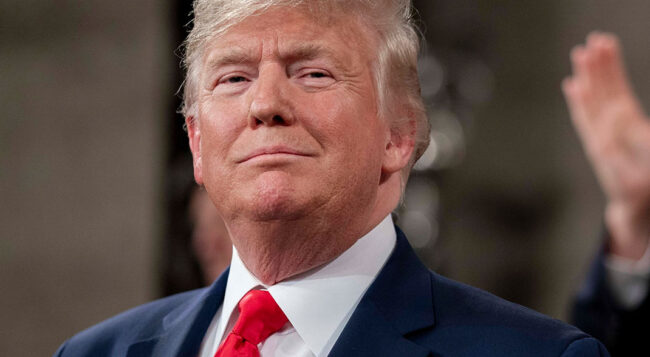
11. **President Trump’s Rhetoric and Potential for Expanded ‘Land Action’**:President Trump’s rhetoric surrounding the anti-drug campaign has been consistently aggressive and has signaled a willingness to escalate military actions beyond maritime interdictions. In public statements, he has conveyed an uncompromising stance, remarking, “I think we’re just going to kill people that are bringing drugs into our country, OK? We’re going to kill them, you know? They’re going to be like, dead,” during a White House roundtable discussion. This language underscores the administration’s declared intent to use lethal force against those involved in drug trafficking.
Furthermore, Trump has repeatedly hinted at the prospect of expanding military operations to land-based targets. He stated, “We are certainly looking at land now, because we’ve got the sea very well under control.” On another occasion, he told reporters, “They are coming in by land. I told them, that’s next. The land is next. We may go to Congress and tell them, but I can’t imagine they’d have a problem.” These pronouncements suggest the administration is actively considering targeting cocaine facilities and drug trafficking routes within Venezuela or other South American countries where cartels operate.
While President Trump has claimed his actions are intended to stem the flow of deadly synthetic opioids like fentanyl from Venezuela, U.S. officials familiar with the matter have indicated that most of that drug is smuggled into the United States over land routes from Mexico. They noted that many of the boats targeted by the U.S. military service routes between Venezuela and Trinidad and Tobago, acting as transit hubs for marijuana and cocaine primarily destined for West Africa and Europe, rather than directly for the United States. This discrepancy raises questions about the immediate nexus between the maritime strikes and the stated objective of combating fentanyl.
Military equipment: Rhetoric of Donald Trump
Categories: All Wikipedia articles written in American English, Anti-immigration politics in the United States, Articles with short description, Pages containing links to subscription-only content, Pages using multiple image with auto scaled images
Summary: The rhetoric of Donald Trump, the 45th and 47th president of the United States, is widely recognized for its unique populist, nationalistic, and confrontational style. It has been the subject of extensive analysis by linguists, political scientists, and communication experts. Known for its direct and unfiltered approach, Trump’s rhetoric emphasizes themes of crisis, division, and loyalty, often casting himself as an outsider fighting against a corrupt political establishment. Central to his communication strategy are emotional appeals that resonate with voter insecurity, promises of restoring past national “greatness”, and the use of simple, repetitive language that amplifies his message to broad audiences.
Trump’s rhetoric often frames complex issues in binary terms, using absolutes such as “always” and “never” to express uncompromising stances. This strategy creates a polarized worldview, encouraging audiences to see political opponents and external threats as existential dangers to the nation. His rhetorical style is further characterized by a high volume of lies, sometimes leveraging what analysts describe as the “firehose of falsehood” propaganda technique. This approach to information dissemination—marked by sheer volume and speed—can overwhelm fact-checking mechanisms and further entrench his narratives among his supporters.
Throughout his political career, Trump has been noted for using inflammatory language, including violent terms and metaphors, particularly when discussing immigration, crime, and political adversaries. His rhetoric has been linked by some scholars to an increase in political hostility and even violence, as it often features direct or implied threats against perceived enemies. Additionally, his speeches frequently draw on populist themes, casting blame on specific groups or individuals for societal problems, which scholars argue has contributed to an atmosphere of distrust and division within the U.S.
Critics argue that Trump’s communication style borrows from authoritarian playbooks, citing his use of scapegoating, appeals to nationalism, and rhetorical attacks on the media. While supporters view his rhetoric as a refreshing departure from political correctness and establishment politics, detractors contend it erodes democratic norms and fuels divisiveness. This rhetoric remains a defining element of Trump’s influence on American politics, with his third consecutive campaign in 2024 being ultimately successful.
Get more information about: Rhetoric of Donald Trump
Read more about: Hollywood’s Hidden Battles: 14 Surprising Truths About Movie Making, Money, and the Producers Who Make It Happen

12. **Strategic Significance of the USS Gerald R. Ford’s Deployment**:The deployment of the USS Gerald R. Ford Carrier Strike Group to the Caribbean marks a significant strategic escalation, fundamentally altering the U.S. military’s force projection in the region. As the Navy’s largest aircraft carrier, the Ford’s arrival introduces substantial additional resources, including nearly 4,500 more sailors and the nine squadrons of aircraft assigned to the carrier. This influx of personnel and aerial assets makes the current build-up one of the largest naval power deployments since the Red Sea conflict in late 2023, signaling a robust and potentially long-term commitment.
The presence of the USS Gerald R. Ford profoundly enhances the operational capabilities available to U.S. Southern Command. Its vast aircraft load, featuring four squadrons of F/A-18 fighters and one squadron of E/A-18G strike fighters, provides the capacity for higher-tempo airstrikes and significantly shortens the flight distances for U.S. aircraft reaching potential land-based targets. This allows for sustained air operations, advanced surveillance, interdiction, and precise kinetic strikes across a broad operational area, reinforcing the administration’s objective to “degrade and dismantle” criminal groups.
This rapid relocation of one of the Navy’s most advanced naval assets from the Mediterranean to the Caribbean also demonstrates the dynamic nature of U.S. naval operations. It highlights the military’s capacity for swift repositioning in response to evolving strategic priorities and operational requirements. The Ford’s deployment will “bolster U.S. capacity to detect, monitor, and disrupt illicit actors and activities,” according to Pentagon spokesman Sean Parnell, thereby enhancing and augmenting existing capabilities to disrupt narcotics trafficking and counter transnational criminal organizations throughout the Western Hemisphere.
Military equipment: Jimmy Carter
Name: Jimmy Carter
Alt: Head shot of Carter in a dark blue suit and smiling
Caption: Official portrait, 1977
Order: 39th
Office: President of the United States
Vicepresident: Walter Mondale
TermStart: January 20, 1977
TermEnd: January 20, 1981
Predecessor: Gerald Ford
Successor: Ronald Reagan
Order1: 76th
Office1: Governor of Georgia
TermStart1: January 12, 1971
TermEnd1: January 14, 1975
Predecessor1: Lester Maddox
Successor1: George Busbee
Lieutenant1: Lester Maddox
StateSenate2: Georgia State
District2: Georgia’s 14th Senate district
TermStart2: January 14, 1963
TermEnd2: January 9, 1967
Predecessor2: James M. Dykes
Successor2: Hugh Carter
BirthName: James Earl Carter Jr.
BirthDate: [object Object]
BirthPlace: Plains, Georgia
DeathDate: [object Object]
DeathPlace: Plains, Georgia, U.S.
RestingPlace: Jimmy Carter House
Party: Democratic Party (United States)
Spouse: [object Object]
Children: Jack Carter (politician)
Parents: James Earl Carter Sr.,Bessie Lillian Gordy
Relatives: List of United States political families (C)#The Carters of Georgia
Education: United States Naval Academy
Occupation: Politician,Post-presidency of Jimmy Carter,Bibliography of Jimmy Carter#Books by Carter
Awards: List of awards and honors received by Jimmy Carter
Signature: Jimmy Carter Signature-2.svg
SignatureAlt: Cursive signature in ink
Branch: United States Navy
Serviceyears: 1946–1953 (active),1953–1961 (reserve)
Rank: Lieutenant (navy)
Mawards: American Campaign Medal,World War II Victory Medal,China Service Medal,National Defense Service Medal
Battles: United States Navy in World War II
Module: Listen voice
Filename: Jimmy Carter speaks on the Soviet invasion of Afghanistan.ogg
Description: Soviet invasion of Afghanistan
Recorded: January 4, 1980
Categories: 1924 births, 2024 deaths, 20th-century American diplomats, 20th-century American farmers, 20th-century American naval officers
Summary: James Earl Carter Jr. (October 1, 1924 – December 29, 2024) was an American politician and humanitarian who served as the 39th president of the United States from 1977 to 1981. A member of the Democratic Party, Carter served from 1971 to 1975 as the 76th governor of Georgia and from 1963 to 1967 in the Georgia State Senate. He is the longest-lived president in U.S. history and the only one to reach the age of 100.
Born in Plains, Georgia, Carter graduated from the U.S. Naval Academy in 1946 and joined the submarine service before returning to his family’s peanut farm. He was active in the civil rights movement, then served as a state senator and the 76th governor, one of the first of the “New South governors” committed to desegregation. After announcing his candidacy in 1976, Carter secured the Democratic nomination as a dark horse little known outside his home state before narrowly defeating Republican incumbent Gerald Ford in the general election.
As president, Carter pardoned all Vietnam draft evaders and negotiated major foreign policy agreements, including the Camp David Accords, the Panama Canal Treaties, and the second round of Strategic Arms Limitation Talks, and he established diplomatic relations with China. He created a national energy policy that included conservation, price control, and new technology. He signed bills that created the Departments of Energy and Education. The later years of his presidency were marked by several foreign policy crises, including the Soviet invasion of Afghanistan (leading to the end of détente and the 1980 Olympics boycott) and the fallout of the Iranian Revolution (including the Iran hostage crisis and 1979 oil crisis). Carter sought reelection in 1980, defeating a primary challenge by Senator Ted Kennedy, but lost the election to Republican nominee Ronald Reagan.
Polls of historians and political scientists have ranked Carter’s presidency below average. His post-presidency—the longest in U.S. history—is viewed more favorably. After Carter’s presidential term ended, he established the Carter Center to promote human rights, earning him the 2002 Nobel Peace Prize. He traveled extensively to conduct peace negotiations, monitor elections, and end neglected tropical diseases, becoming a major contributor to the eradication of dracunculiasis. Carter was a key figure in the nonprofit housing organization Habitat for Humanity. He also wrote political memoirs and other books, commentary on the Israeli–Palestinian conflict, and poetry.
Get more information about: Jimmy Carter
Read more about: Navigating a Total Loss: Your Comprehensive Consumer Guide to Car Accidents and Insurance Settlements

13. **Integration of Specialized Special Operations Assets**:Beyond the conventional naval and air assets, the U.S. military build-up in the Caribbean has also included the integration of highly specialized special operations forces and equipment. Notably, the Pentagon has deployed the MV Ocean Trader, a civilian ship converted into a floating Special Operations base. This vessel provides a mobile platform capable of dispatching elite troops on short notice, significantly enhancing the flexibility and reach of covert operations in the region.
The presence of the Ocean Trader coincided with the deployment of select aircraft from the 160th Special Operations Aviation Regiment, an elite helicopter unit renowned for its support of dangerous missions worldwide. Visuals analyzed by media showed helicopters, including MH-6 Little Birds—favored by commanders for Special Operations ground assaults—flying less than 90 miles from Venezuela’s coastline in early October. While officials indicated this depicted flight training, the unit’s presence was explicitly stated to provide “options for Trump and the Pentagon should he need them.”
The Ocean Trader’s capability to house and maintain helicopters from the 160th Special Operations Aviation Regiment underscores a sophisticated level of preparedness. Although officials clarified that the imagery was not evidence of drills for a land assault into Venezuela, the deployment of these assets provides the administration with increased capacity for precision operations. This integration of specialized capabilities broadens the scope of potential military actions, extending beyond traditional maritime interdictions to include highly targeted missions against criminal networks.
Military equipment: Deployable Specialized Forces
UnitName: Deployable Specialized Forces
Caption: Seal of the former command name Deployable Operations Group
Dates: July 20, 2007 spaced ndash October 1, 2013, Deployable Operations Group (DOG) formerly,2013 spaced ndash active,Deployable Specialized Forces (DSF) reorganized
Country: United States of America|size=23px
Branch: flagicon image,United States Coast Guard
Type: List of counter-terrorism agencies
Role: Counterterrorism,War on drugs,Counterproliferation,Expeditionary warfare
Size: ≈2,000
CommandStructure: United States Department of Homeland Security
Nickname: “DOG Teams” “DSF Teams”
Battles: War on Terror
Categories: All articles with dead external links, All articles with unsourced statements, Articles with dead external links from August 2014, Articles with dead external links from June 2017, Articles with permanently dead external links
Summary: The Deployable Specialized Forces (DSF) —formerly Deployable Operations Group— are part of the United States Coast Guard that provide highly equipped, trained and organized deployable specialized forces, to the Coast Guard, United States Department of Homeland Security (DHS), United States Department of Defense (DoD) and inter-agency operational and tactical commanders. The command was formerly headquartered in Arlington, Virginia where it was established on 20 July 2007, and was commanded by a captain. It was decommissioned by the Commandant of the Coast Guard, Admiral Robert J. Papp Jr. on 1 October 2013, with units previously assigned to the DOG being split between Coast Guard Pacific and Atlantic Area commands. The units were subsequently reorganized under Deployable Specialized Forces (DSF).
The Deployable Specialized Forces purpose is to develop systems and processes for standardized training, equipment, organization, planning, and scheduling of rapidly deployable specialized forces to execute mission objectives in support of tactical and operational commanders. Since 2007, the unit has deployed throughout the world in support of national interests and requirements as tailored and integrated force packages. This included response to the 2010 Haiti earthquake, in support of the Deepwater Horizon oil spill in the Gulf of Mexico, and more recently deploying specialized counter piracy boarding teams to the Middle East, such as Operation Ocean Shield, where TACLET and MSST teams part of Combined Task Force 151 were an integral role in Somali counterpiracy. In addition, since 2007, DSF units have taken part in nine of the 11 largest maritime cocaine seizures.
Deployable Specialized Forces are not special operations forces as they are not a part of United States Special Operations Command (USSOCOM) since the Coast Guard does not operate under the Department of Defense. Missions of deployable specialized forces units include high-risk, high-profile tasks such as counter-terrorism, diving operations, intelligence-cued boarding operations, Visit, Board, Search, and Seizure, threat assessments involving nuclear, and biological, or chemical weapons, as well as detecting and, if necessary, stopping or arresting submerged divers.
Deployable Specialized Forces also had health services technicians who were attached to medical teams operating within differing commands. These technicians supported roles in Afghanistan, Iraq, and other areas with Navy and Department of Defense groups.
Deployable Specialized Forces manages Coast Guard personnel assigned to the Navy Expeditionary Combat Command (NECC). The unit also had a high level of involvement in the Coast Guard SEAL Program; candidates could attend United States Naval Special Warfare Training and serve with Navy SEAL teams. While the program is currently suspended, there were, as of 2017, several Coast Guardsmen serving on SEAL teams.
Get more information about: Deployable Specialized Forces
Read more about: Costco vs. Sam’s Club: Navigating the Ultimate Warehouse Club Showdown for Savvy Shoppers in 2025
The deployment of the USS Gerald R. Ford Carrier Strike Group to the Caribbean represents a pivotal moment in U.S. foreign policy, showcasing a profound escalation of military power and a determined shift in strategy against transnational criminal organizations and perceived threats to national security. The comprehensive nature of this operation, encompassing vast naval and air assets, specialized forces, and a reconfigured command structure, reflects a robust commitment to shaping regional security. As the U.S. navigates these complex waters, the overarching aim remains to establish stability and assert influence, impacting geopolitical dynamics across the Western Hemisphere.

